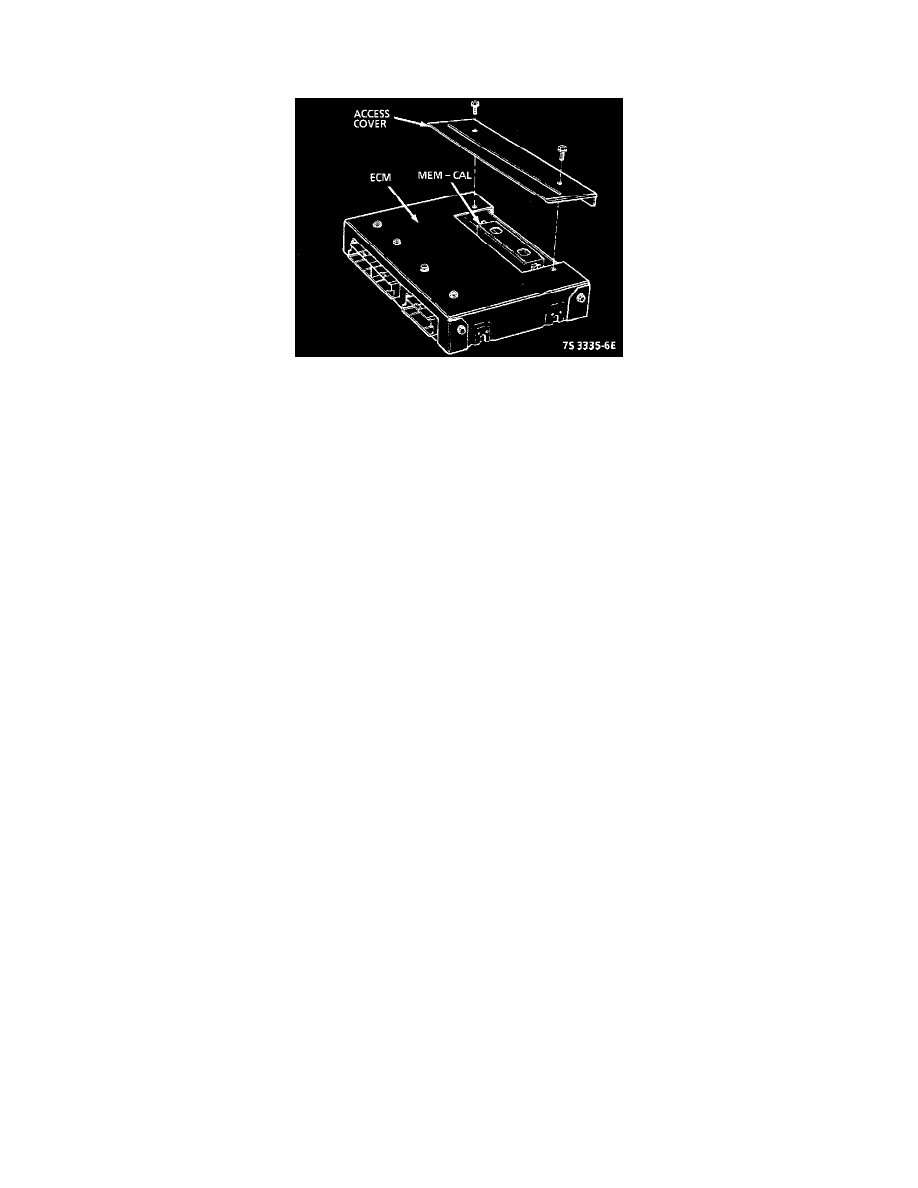Century V6-173 2.8L VIN W FI (1987)

Engine Control Module: Description and Operation
General System Description
Electronic Control Module (ECM)
PURPOSE
The Electronic Control Module (ECM) is the control center of the fuel injection system. It constantly looks at the information from various
sensors and controls the systems that affect vehicle performance. The ECM also performs the diagnostic function of the system. It can recognize
operational problems, alert the driver through the "Service Engine Soon" light, and store a code(s) which identify the problem areas to aid the
technician in making repairs.
Memory and Calibration (MEM-CAL) unit
This assembly contains the functions of the Programable Read Only memory (PROM), CALPAK and the Electronic Spark Control (ESC)
module used on other GM applications. Like the PROM, it contains the calibrations needed for a specific vehicle as well as the back-up fuel
control circuitry required if the rest of the ECM becomes damaged or faulty.
OPERATION
The ECM supplies either 5 or 12 volts to power various sensors or switches. This is done through resistances in the ECM which are so high in
value that a test light will not light when connected to the circuit. In some cases, even an ordinary shop voltmeter will not give an accurate reading
because its resistance is too low. A 10 megohms input impedance, Digital Volt/Ohm Meter (DVOM) is required to assure accurate voltage
readings.
The ECM controls output circuits such as the injector(s), Idle Air Control (IAC) valve, and coolant fan relay by controlling the ground circuit
through transistors or a device called a quad-driver.
CONSTRUCTION
The GMP4 ECM is used on this engine. For service this ECM consists of two parts: a Controller (the ECM without a Mem-Cal) and a Mem-Cal
unit.
